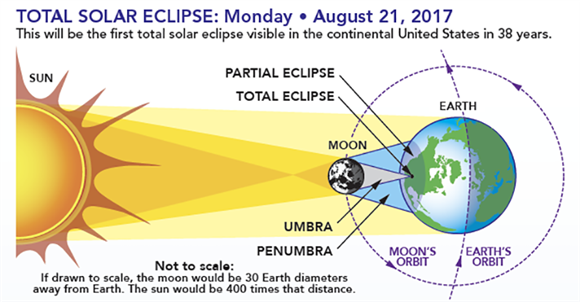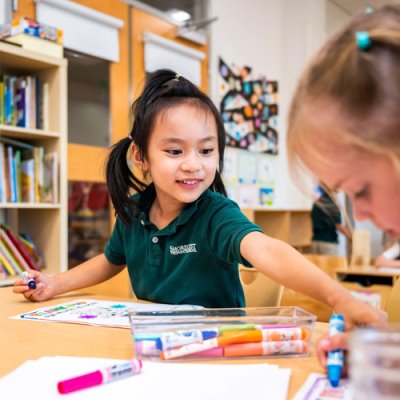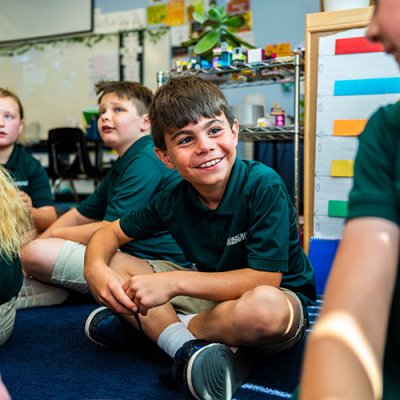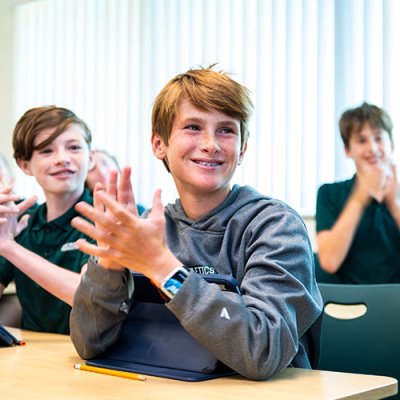

Dispelling Solar Eclipse Myths
Source/Author: Charles Fulco, NASA/AAS 2017 U.S. Solar Eclipse Educator
August 16, 2017
As a NASA and AAS 2017 U.S. Eclipse Educator, I need to address problems and concerns that teachers across the state have been recently calling to my intention. Over the past couple weeks, I have been receiving calls from instructors from districts around Illinois expressing their frustrations, confusion and disappointment over the actions of boards of education, superintendents, principals and even science coordinators regarding the upcoming solar eclipse on Monday, August 21st. It has reached the point where these teachers’ concerns need to be addressed.
As you are undoubtedly aware, a total solar eclipse will occur in your state on Monday afternoon, something that comes to any given place on average once every 360 years. I have traveled to see four total eclipses on four continents, at great expense and travel time, but each time coming away with an experience that will last my lifetime. On those trips, I taught students (K-12) in countries as diverse as Mexico, Austria, China and Argentina. I visited Argentina again this February to see an annular eclipse, again teaching students eclipse science in preparation for the big event.
As I understand from these teachers, more than a few districts have chosen to remand their teachers and students indoors during the duration of the eclipse. In this age of STEAM, Next Gen Science and Common Core standards, this flies in the face of authentic science instruction and actually reverses the direction of education. This is ironic, considering how much attention and effort has been placed on students (and their teachers) to perform well in the sciences, in an effort to compete on the world stage. As you know, the U.S. is not near the top of the worldwide ladder in science scores.
I understand many districts are afraid of the litigious society in which we live, which hamstrings activities for fear of lawsuits. While I, too have taught in this environment, it has never stopped me, nor my administrators, from providing our students with the educational experiences they deserve, and that includes making certain they observe eclipses where should—outdoors, not kept indoors in a classroom with the blinds closed.
This type of behavior is based on fear of the unknown, adherence to outdated myths and misinformation, and lack of complete information when forming a decision. I blame several parties for this: misinformed newscasters broadcasting misinformation; administrators lacking a true science background; reports of faulty eclipse glasses; and many other factors.
I want to address the most common misconceptions I’ve been hearing:
- “The Sun is more dangerous during an eclipse.” This is utter nonsense and for some reason, has persisted into the 21st Century. An eclipsed Sun is no more dangerous than the “everyday” Sun, but for some reason, some districts still keep teachers and students in their rooms with pulled shades, watching the eclipse on a screen, rather than outdoors, safely and under the care of a professional educator. I believe their fear of nature is transferred to the students as well: If the adult says an eclipse is scary and dangerous, than it must be!
- “There are no safe ways to view an eclipse.” More bad science. Considering every part of the U.S. will see at least a partial eclipse, there are many proven, safe ways for all grade levels to observe an eclipse: pre-K students can cross-hatch their fingers to make little pinhole cameras and stand with their backs to the Sun while they project the solar image through their fingers onto the ground—no equipment needs needed! They also will enjoy seeing the myriad undulating “mini eclipse” crescents on the ground under a leafy tree while remaining safely under its cover; older students can construct a solar viewer, which also satisfies an NGSS Science & Engineering Practices requirement; anyone can hold a pasta colander as another way to project crescents on the ground; and one can look directly at the eclipse using certified-safe solar glasses (on a non-eclipse day as well). Of course, during totality, it is perfectly safe to look directly at the eclipse, but only for as long as totality lasts!
- “Schools should be closed and students at home on Eclipse Day.” This is perhaps the most troubling and worrisome thing I’ve been hearing. Why would a district allow its students to remain at home, possibly unattended, and most certainly without proper supervision for an eclipse? By telling students to remain away from school, it also insinuates that a school does not trust its own staff, who are trained professionals. I believe this may ironically encourage a potentially dangerous situation at home.
- “You can see it better on TV.” Again, this is spoken by those who have never seen an eclipse live and invoke uninformed decisions based on their own lack of experience. An easy remedy: invite a local expert to your school for that day who does know better!
I owe my science career and love of astronomy in large part to an eclipse I viewed as an 8-1/2 year old. That first eclipse led me to a telescope, which then fostered a lifelong love of science and especially astronomy. I finally saw my first totality in 1991 with my family, and we now are ready to see our third total eclipse together some 26 years later, a sight we await with unabashed enthusiasm. In a world where children are enshrouded in a digital environment where virtual reality rules, how can you in good conscience deny them a chance to see something real that they will remember their entire lives? Who knows if the next Neil deGrasse Tyson would have emerged from this eclipse? Do not deny this opportunity to the children that have been entrusted to you, and do not deny your teachers the opportunity to educate in the least-restrictive environment possible.
My goal for this eclipse is No Child Left Inside. Let’s make this happen all across the U.S. on August 21st!
Sincerely,
Charles Fulco
NASA/AAS 2017 U.S. Solar Eclipse Educator
























